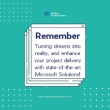The modern business world is very competitive and companies are always on the lookout for ways to stay ahead of their competitors and remain efficient. Business Process Reengineering (BPR) is one of the most effective tools for achieving this.
In this complete guide to BPR, we will discuss its background, give examples, share practical solutions that can be applied in real life situations.
We will show how BPR improves various aspects of your business including CRM and digitization of administrative processes among other things. Also, we will explain how you can implement it successfully so as to get optimum results.
Background of Business Process Reengineering

To meet a need for corporations that wanted dramatic performance improvement from process redesigning, business process reengineering (BPR) was developed in the early 1990s.
Popularised by Michael Hammer and James Champy in their classic book “Reengineering the Corporation”, BPR means thinking about and organising work in order to achieve enormous improvements in cost-effectiveness, quality, customer service or speed.
In its essence, BPR requires changing existing procedures completely rather than making small changes here and there. In addition, enterprises should change their perspectives while considering consumers’ needs and stop old practices that may not be efficient anymore because they no longer make economic sense.
BPR Examples
To illustrate the concept of BPR, let’s look at a few examples of companies that have successfully implemented these strategies:
1. Ford Motor Company
Ford took on a big job to make its factories work better in the 1990s. They changed how they handled orders, which cut down the time to process them and boosted how well they made cars.
2. IBM
IBM shook up how it helped customers by bringing together its customer help and tech support teams. This change meant they fixed problems faster and made customers happier.
3. General Electric (GE)
GE jumped on board with BPR to change how it bought stuff. By rethinking how it got materials and worked with suppliers, GE saved a lot of money and sped up its supply chain.
These cases show how BPR can bring about big changes that help businesses do well.
Customer Relationship Management (CRM)

One crucial area where BPR can make a big difference is Customer Relationship Management (CRM). The usual CRM methods often involve complicated and hands-on steps that take a lot of time and might lead to mistakes.
When companies redesign these methods, they can boost their customer interactions and make the whole experience better for everyone.
BPR in CRM involves
1. Automating Customer Interactions
Rolling out better CRM software can make dealing with customers easier, set up automatic follow-ups, and give you a clearer picture of how customers behave.
2. Integrating Systems
Connecting various CRM systems with other business processes ensures a seamless flow of information and reduces duplication.
3. Personalising Customer Engagement
By leveraging data analytics, businesses can tailor their interactions and offers to meet individual customer needs.
Digitising Administrative Processes

Another critical area for BPR is digitising administrative processes. Administrative tasks, such as data entry, document management, and communication, can be labour-intensive and prone to errors. Digitising these processes can significantly improve efficiency and accuracy.
BPR strategies for digitising administrative processes include:
1. Implementing Workflow Automation
Automated workflows can streamline routine tasks, reduce manual intervention, and minimise errors.
2. Adopting Document Management Systems
Digital document management systems facilitate easy storage, retrieval, and sharing of documents, enhancing collaboration and reducing paperwork.
3. Utilising E-Signature Solutions
Electronic signatures expedite document approvals and contracts, speeding up administrative processes.
Improving Product Development Processes

BPR can also play a pivotal role in improving product development processes. Traditional product development often involves lengthy and cumbersome procedures that can delay time-to-market. By reengineering these processes, businesses can accelerate development cycles and bring products to market more quickly.
Key aspects of BPR in product development include:
1. Streamlining Collaboration
Enhancing communication and collaboration between development teams, suppliers, and stakeholders can reduce bottlenecks and improve efficiency.
2. Adopting Agile Methodologies
Agile practices enable iterative development, allowing teams to adapt to changes and deliver products faster.
3. Leveraging Technology
Utilising advanced tools and software for project management, design, and testing can enhance the product development process.
Updating Technology Infrastructure

Updating technology infrastructure is a crucial component of BPR. Outdated or inefficient technology can hinder business intelligence consultancy operations and limit growth. By reengineering technology infrastructure, businesses can improve performance, security, and scalability.
BPR strategies for updating technology infrastructure include:
1. Upgrading Hardware and Software
Investing in modern hardware and software solutions ensures compatibility with current standards and improves overall performance.
2. Cloud Migration
Moving to cloud-based platforms offers scalability, flexibility, and cost savings.
3. Implementing Integrated Systems
Integrating various technology systems enhances data flow and reduces redundancies.
Reducing Staff Redundancy

Reducing staff redundancy is another important aspect of BPR. Streamlining processes and automating tasks can lead to a more efficient workforce. However, it’s essential to approach this aspect carefully to avoid negative impacts on employee morale.
BPR strategies for reducing staff redundancy include:
1. Automating Routine Tasks
Implementing automation tools can reduce the need for manual intervention and allow employees to focus on more strategic tasks.
2. Redefining Job Roles
Analysing job roles and responsibilities can help identify areas where redundancy exists and reassign tasks to optimise workforce efficiency.
3. Providing Training and Support
Offering training and application maintenance and support to employees helps them adapt to new processes and technologies, ensuring a smooth transition.
Cutting Costs Across Operations

Cutting costs across operations is a primary goal of BPR. By reengineering processes, businesses can identify and eliminate inefficiencies, leading to significant cost savings.
BPR strategies for cutting costs include:
1. Streamlining Operations
Analysing and redesigning processes to eliminate unnecessary steps and reduce waste.
2. Outsourcing Non-Core Activities
Outsourcing non-essential functions to specialised service providers can lower costs and improve efficiency.
3. Optimising Resource Allocation
Ensuring that resources are allocated effectively to areas that deliver the highest value.
Improving Output Quality

Improving output quality is a critical objective of BPR. Higher quality products and services lead to greater customer satisfaction and loyalty.
BPR strategies for improving output quality include:
1. Implementing Quality Management Systems
Adopting systems such as Six Sigma or Total Quality Management (TQM) can enhance quality control and continuous improvement.
2. Conducting Regular Audits
Regular audits and reviews of processes help identify areas for improvement and ensure adherence to quality standards.
3. Encouraging Employee Involvement
Engaging employees in quality initiatives and seeking their feedback can lead to valuable insights and improvements.
Human Resource (HR) Process Optimisation

Human Resource (HR) process optimisation is another area where BPR can make a significant impact. Efficient HR processes contribute to better employee management, recruitment, and retention.
BPR strategies for HR process optimisation include:
1. Automating HR Functions
Implementing HR software for tasks such as payroll, recruitment, and performance management can streamline operations and reduce administrative burden.
2. Enhancing Recruitment Processes
Using data-driven approaches and modern recruitment tools can improve the efficiency and effectiveness of hiring.
3. Fostering Employee Development
Investing in employee training and development programs enhances skills and drives overall performance.
Conclusion
In conclusion, Business Process Reengineering (BPR) is a powerful strategy for transforming businesses and achieving significant improvements in performance. By understanding the background of BPR, examining successful examples, and applying BPR principles to various aspects of business operations, companies can enhance their efficiency, reduce costs, and improve overall quality.
Whether it’s through customer relationship management (CRM), digitising administrative processes, or updating technology infrastructure, BPR offers a comprehensive approach to driving business success. Embracing BPR and leveraging its principles, methodologies, and tools can lead to substantial benefits and position your business for long-term success.
For those interested in further exploring BPR, consider obtaining business process reengineering certification or consulting with experts in business process reengineering services, software consulting services, and business intelligence consultancy. Additionally, exploring business process reengineering software and application maintenance and support can provide valuable resources for implementing and sustaining BPR initiatives.
Walter & Associates excels in business process reengineering by analysing existing workflows, identifying inefficiencies, and redesigning processes for enhanced performance. Their expertise ensures streamlined operations, reduced costs, and improved productivity through tailored solutions and advanced methodologies, leading to transformative changes that drive business growth and efficiency.























